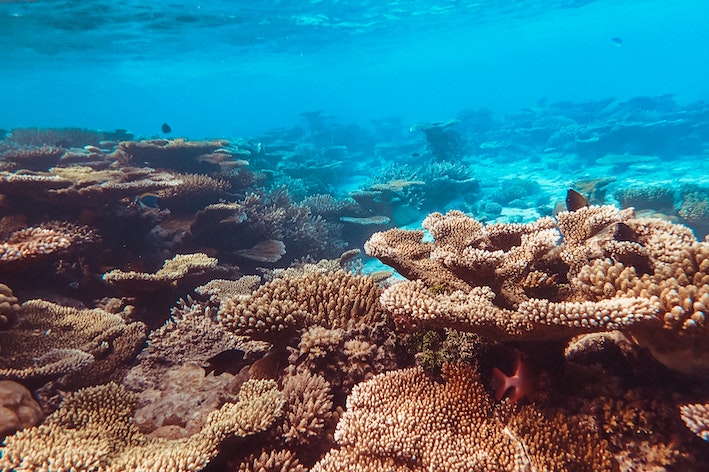Reef: What It Is and Steps to Take to Protect It

Our oceans are magnificent and full of life. From countless specifies of fish to beautiful coral reef, they house an intricate ecosystem that everyone benefits from. However, natural and manmade causes threaten the delicacy of this community. In today’s blog, we’ll learn about what a reef is. Plus, steps we can take to help protect it.
What is a Reef?
A reef is a ridge of rock or coral lying beneath the surface of a natural body of water. The largest coral system is the Great Barrier Reef in Australia. It covers over 2,300 kilometres.
There are three types of reef that form:
- Biotic. Formed from coral, oyster, or sponges, these habitats are from by the constant assault of ocean waves. They take on additional names depending on how close to land they are. Fringing are attached to an island. Barrier form a barrier around an island resulting in a lagoon between the shore and the reef. While an atoll is a ring with no land present.
- Geologic. Harbouring paleo-environmental information, these habitats provide geologists insight into the Earth’s history.
- Artificial. These human-created underwater structure are typically built to promote marine life. They generally have a featureless bottom, block ship passage and the use of trawling nets, and/or improve surfing. Shipwrecks also become artificial habitats.

The Ecosystem
Protecting coastlines from storms and erosion, coral coasts provide jobs for local communities. What’s more, they offer opportunities for recreation, and are a source of food and new medicines. Fishing, diving, and snorkelling around these attractive ecosystems is a hundred million dollar business.
Referred to as the “rainforest of the sea”, 25% of the ocean’s fish depend of healthy coral habitats. These intricate systems provide shelter, food, a place for reproduction and rearing, and safe places to hide.
What is the Danger?
The five biggest contributors to the death of reefs are:
- Physical Damage. Coastal development, dredging and quarrying damages these coastlines. As well as boat anchors and the touching or removing of corals.
- On-Land Pollution. Residue from agriculture in addition to sewage and toxic substances are hazardous to the ecosystem. What’s more, trash and micro-plastics snag on coral and block the sunlight needed for photosynthesis.
- Overfishing. Altering food-web structures causes the reduction of grazing fish that keep corals clean of algal overgrowth. Plus, the practise of using explosives to kill fish also have damaging effects.
- Coral Harvesting. The demand of coral for jewellery and other trinkets leads to the destruction of habitats.
- Climate Change. Increased ocean temperatures and changing ocean chemistry are the biggest threats to the ecosystem. These factors stress out the coral so much that they lose their colour. Thus, making them more susceptible to infectious diseases.

How We Protect the Reef
- Choose sustainable seafood.
- Conserve water. Don’t leave the faucet running when you’re brushing your teeth.
- If you dive, then don’t touch the coral. Remember, they are living organisms.
- Use sunscreen that doesn’t contain material which harms marine life.
- Pick up any trash you come across on the beach. A healthy shore equals a healthy ocean.
- Don’t buy corals as gift. It takes them decades to create structures. Therefore, just leave them be.